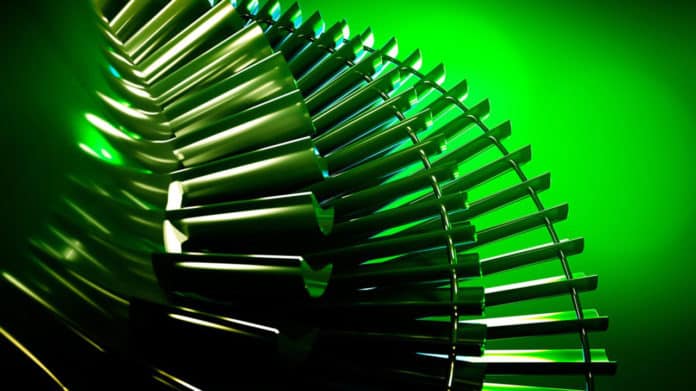Selective laser melting (SLM), also known as direct metal laser melting (DMLM) or laser powder bed fusion (LPBF), is a rapid prototyping, 3D printing, or additive manufacturing (AM) technique designed to use a high power-density laser to melt and fuse metallic powders. Although the method is prone to weld-cracking.
Scientists at the EPFL’s Laboratory of Thermomechanical Metallurgy (LMTM) have come up with a new laser 3D-printing technique. The technique works by applying a second laser treatment every few layers during the building phase. This significantly lessens cracking and produces metal components with unprecedented resistance from high temperatures, damage, and corrosion.
Scientists noted that the technique could have applications in manufacturing new power-generating turbine blades or key aircraft components.
During the experiments, scientists found that the technique is potentially able to eliminate 95% of cracking normally observed in a nickel-based superalloy.
To develop this new method, scientists used a technique named laser shock peening, or LSP, to “heal” cracks on the fly during the 3D-printing process. During this process, a solid-state laser beam is pulsed on a metallic surface. Shock waves are then generated, traveling throughout the component under construction. It acts as a sort of high-energy photonic “hammer,” sending shock waves through the material.
The method involves two lasers. The first melt the metallic powders and heats the fused material, while the second generates stresses in the component in targeted locations to eliminate cracks.
Roland Logé at the School of Engineering, said, “Laser shock peening is normally reserved for surface treatments. But in our case, it has become a bulk treatment, in that it operates in 3D within the material itself.”
“Several 3D-printing companies have expressed an interest in the new technique. This hybrid 3D-printing method has applications that go way beyond eliminating cracks. We’re only just beginning to understand its full potential.”
The study is detailed in the journal Additive Manufacturing.
